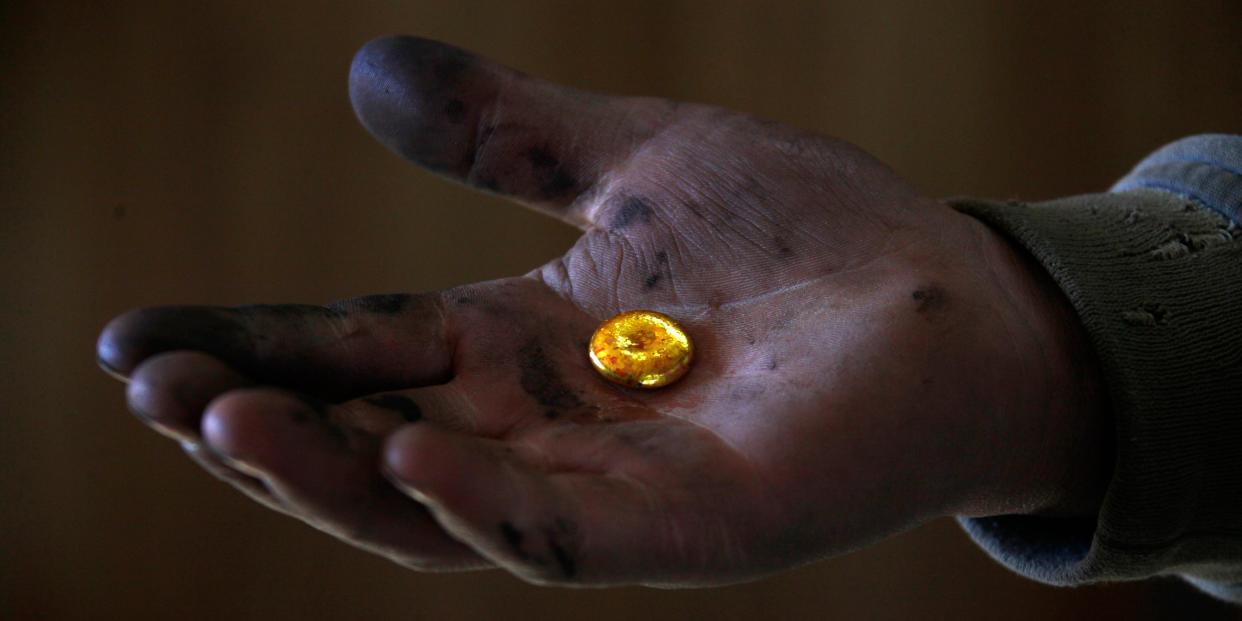It's not just gold. Commodities from copper to cocoa are seeing huge gains in 2024.

Gold, copper, oil, and cocoa are up big as a broad takes hold in the commodities sector.
The rally is driving historic profits for the commodities trading industry.
Material shortages and macro uncertainty are key reasons why commodities are climbing, traders say.
Not all that glitters is gold — that's because other raw materials are shining just as bright.
Commodity trading has been booming in recent months, Apex Trader Funding CEO Darrell Martin told Business Insider, as everything from industrial metals to oil runs hotter:
"The market volatility created by these big moves creates a ton of opportunity," he said. "It's creating a lot of volatility intraday, which is amazing for traders. It's giving them a lot of opportunities to go in and to produce income that way."
Propping up the rally is big upside among a plethora of physical materials, which hast sent the commodity-based S&P GSCI up 12.8% for the year, handily outpacing the S&P 500's 7% gain. According to Bloomberg, it's sparked the most profitable period in the history of commodities trading, with the top four private trading firms netting $50 billion since 2022.
"This is your classic late-cycle rally in commodities," Carlyle's Jeff Currie told CNBC on Wednesday. "We're looking at economic growth around the world, industrial production has bottomed, it's starting to become expansionary; that's against low inventories, not a lot of spare capacity."
There are two key themes that are behind the high-octane run in commodities markets, market experts say.
Inventory shortages
Low supply is the central issue driving gains in commodities like copper and cocoa.
"The copper supply crisis is here," Bank of America titled a Monday note: "Tight copper mine supply is increasingly constraining refined production: the much-discussed lack of mine projects is finally starting to bite."
The metal is estimated to hit $5.44 a pound by 2026, the bank said, representing 27% upside from its current price of $4.28 per pound.
So far this year, it's climbed 11.6%, a boom that both Currie and Martin associated with a post-pandemic production rebound. But in Bank of America's view, copper is also the epicenter of the energy transition, and will further benefit as artificial intelligence data centers expand.
It is a similar story for cocoa, as droughts and bad harvests have rocketed the ingredient to records. Over the past 12 months, cocoa futures have gained 256%, and a metric ton costs a record $10,900.
Though this may seem like a bout of bad luck among producer countries, climate change may cause future agricultural shortages, The Wall Street Journal noted in a recent article. Coffee beans could face the same fate, with the commodity already on a tear this year.
Global uncertainties
While supply-demand imbalances also extend to crude, teetering macroeconomic outlooks are another factor shaping momentum in oil and gold.
So far this year, the yellow metal has shot up nearly 15%, though part of its success stems from 2023 underperformance, Martin said.
"Gold is always lagging behind. And when it finally does go, it pops big." On Friday, gold hit another all-time high of $2,424 per ounce.
Sticky inflation, massive central bank buying, and geopolitical turmoil have sent the safe haven higher. For these reasons, Martin sees the price of gold quadrupling within three to five years.
Other estimates haven't been so bold, but analysts such as Ed Yardeni and David Rosenberg expect it to climb 50% and 30% in the coming years. Yardeni also expects Brent oil to reach $100 a barrel if conflict in the Middle East escalates.
While 2024 has been a boon for commodities traders, some warn of the macro impact of soaring prices. Market experts say that rising commodity prices will result in a new spike in inflation, dampening chances of a Federal Reserve interest rate pivot.
"If they cut rates, [commodities] are going up, but they don't cut rates because commodity prices are higher," Currie said. "So from a commodity perspective, it's a win and it goes back to my point, commodities are always the best play at this point in the business cycle for that precise reason."
Read the original article on Business Insider
